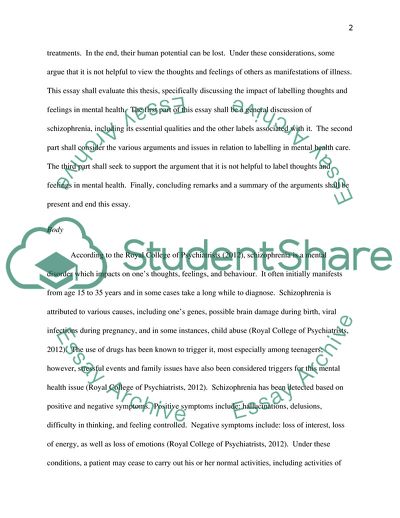Cite this document
(Schizophrenia and Stigma Coursework Example | Topics and Well Written Essays - 4250 words, n.d.)
Schizophrenia and Stigma Coursework Example | Topics and Well Written Essays - 4250 words. https://studentshare.org/psychology/1777100-it-is-not-helpful-view-the-thoughts-and-feelings-of-others-as-manifestations-of-illness
Schizophrenia and Stigma Coursework Example | Topics and Well Written Essays - 4250 words. https://studentshare.org/psychology/1777100-it-is-not-helpful-view-the-thoughts-and-feelings-of-others-as-manifestations-of-illness
(Schizophrenia and Stigma Coursework Example | Topics and Well Written Essays - 4250 Words)
Schizophrenia and Stigma Coursework Example | Topics and Well Written Essays - 4250 Words. https://studentshare.org/psychology/1777100-it-is-not-helpful-view-the-thoughts-and-feelings-of-others-as-manifestations-of-illness.
Schizophrenia and Stigma Coursework Example | Topics and Well Written Essays - 4250 Words. https://studentshare.org/psychology/1777100-it-is-not-helpful-view-the-thoughts-and-feelings-of-others-as-manifestations-of-illness.
“Schizophrenia and Stigma Coursework Example | Topics and Well Written Essays - 4250 Words”. https://studentshare.org/psychology/1777100-it-is-not-helpful-view-the-thoughts-and-feelings-of-others-as-manifestations-of-illness.


